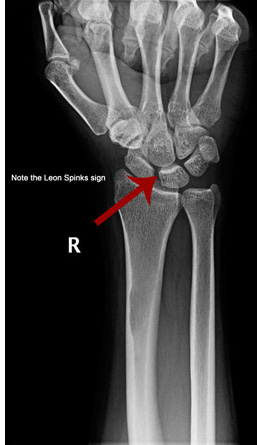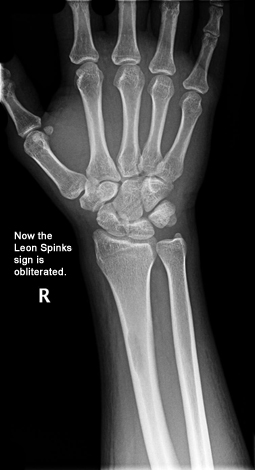Scapholunate Interosseous Ligament
One of the most common sports injuries, especially in two-wheel sports, occurs in the scapholunate interosseous ligament.
The scapholunate interosseous ligament is the link between carpal scaphoid and lunate bone. It ensures stability of the scapholunate joint and helps keep the entire wrist stabilized. Injuries to this very crucial ligament commonly occur in falls on outstretched hands. A scapholunate interosseous ligament injury may present both patients and surgeons with diagnostic and treatment challenges. This injury remarkably disorders normal carpal motion and spreads the scaphoid bone away from the lunate bone, as shown in the picture below.
Diagnosis

Early diagnosis of scapholunate tear is critical. As is the case with many common sports injuries, identifying the exact problem can be a tricky process. This is mainly because a SIL injury can often be confused with a simple wrist sprain. The bones are not fractured, but are in an abnormal relationship with each other, and that can further confuse a physician who is not knowledgeable in this area. Untreated, the body, which has a solution for this unstable joint, will cause the joint to become arthritic, painful, and stiff.
An X-Ray or MRI would usually reveal the nature and extent of the ligament injury. Photos will show a gap between the two structures. Gap width is the most important way to determine whether an injury that requires more treatment than a simple splint has occurred.
Surgical Treatment
The most frequently utilized form of treatment for Scapholunate interosseous ligament injury involves a series of surgeries. First, a patient is subjected to surgery to repair the ligament and then stabilize the bones in their correct relationship with pins. The patient is then placed under a cast for twelve weeks. This is followed by yet another surgical procedure to remove the pins. The problem with this plan is that after the pins are removed, the bones often resume their abnormal relationship.
The Sanders Clinic Solution
 At Sanders Clinic, we utilize a more efficient form of treatment that gets the patient back on track in good time. Our procedure involves a small incision in the wrist to fix the torn ligament. We then stabilize the bones with a screw.
At Sanders Clinic, we utilize a more efficient form of treatment that gets the patient back on track in good time. Our procedure involves a small incision in the wrist to fix the torn ligament. We then stabilize the bones with a screw.
The patient is then given a removable brace that can be removed for showering and worn for eight weeks. After that, the patient is ready for rehabilitation with a series of exercises to gain motion and strengthen the wrist. The best part is that patients can return to sports in three months.
